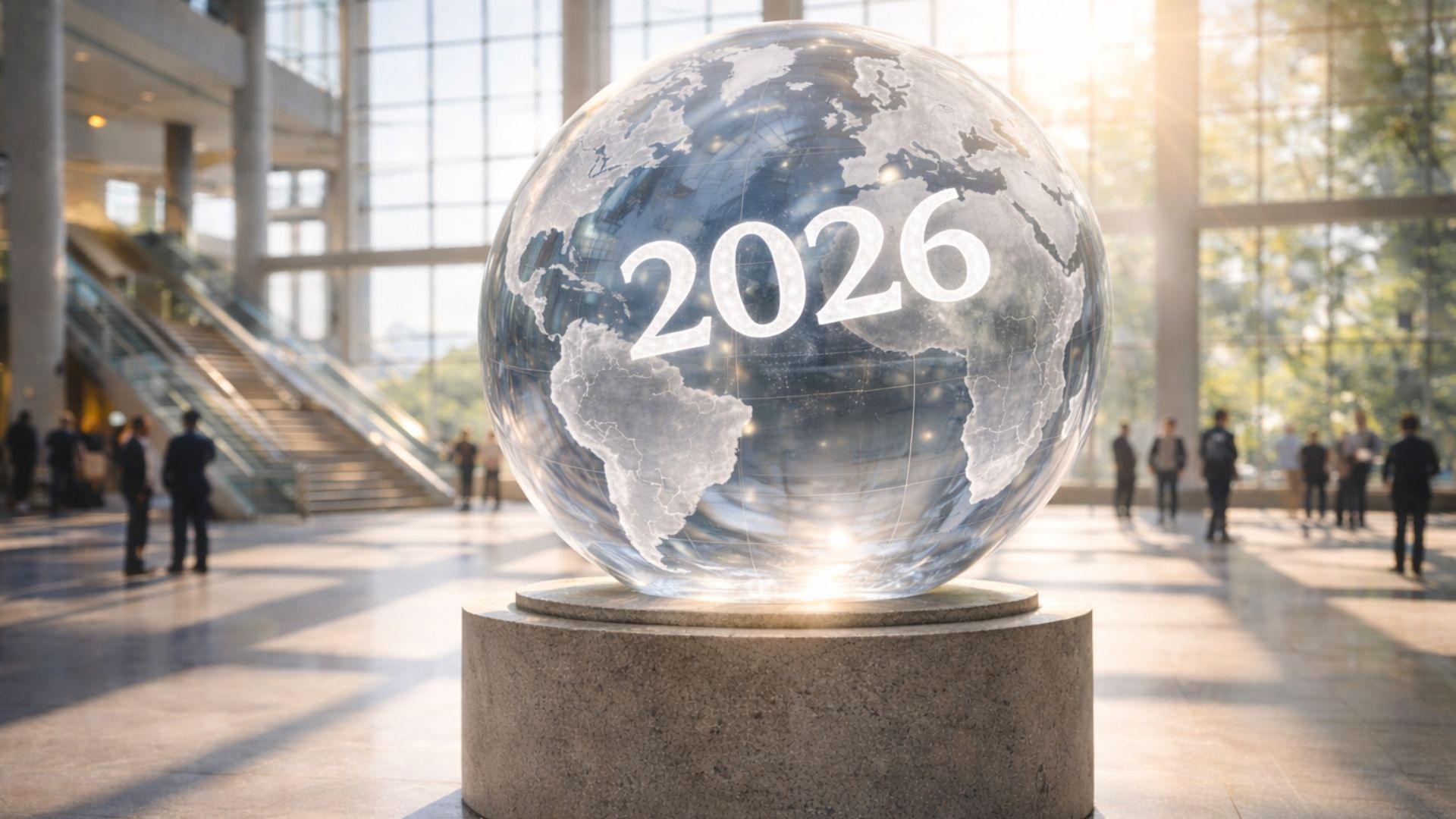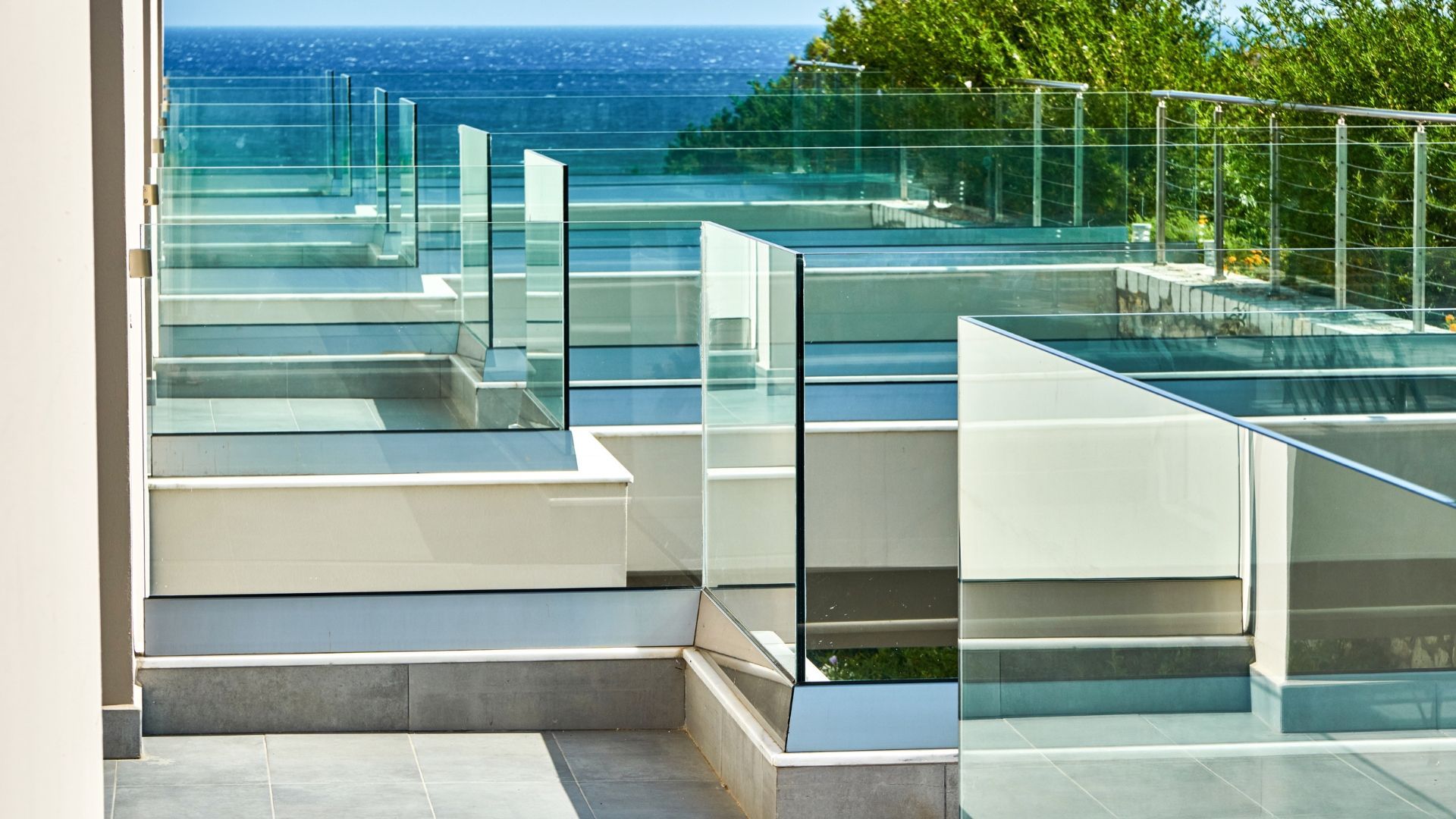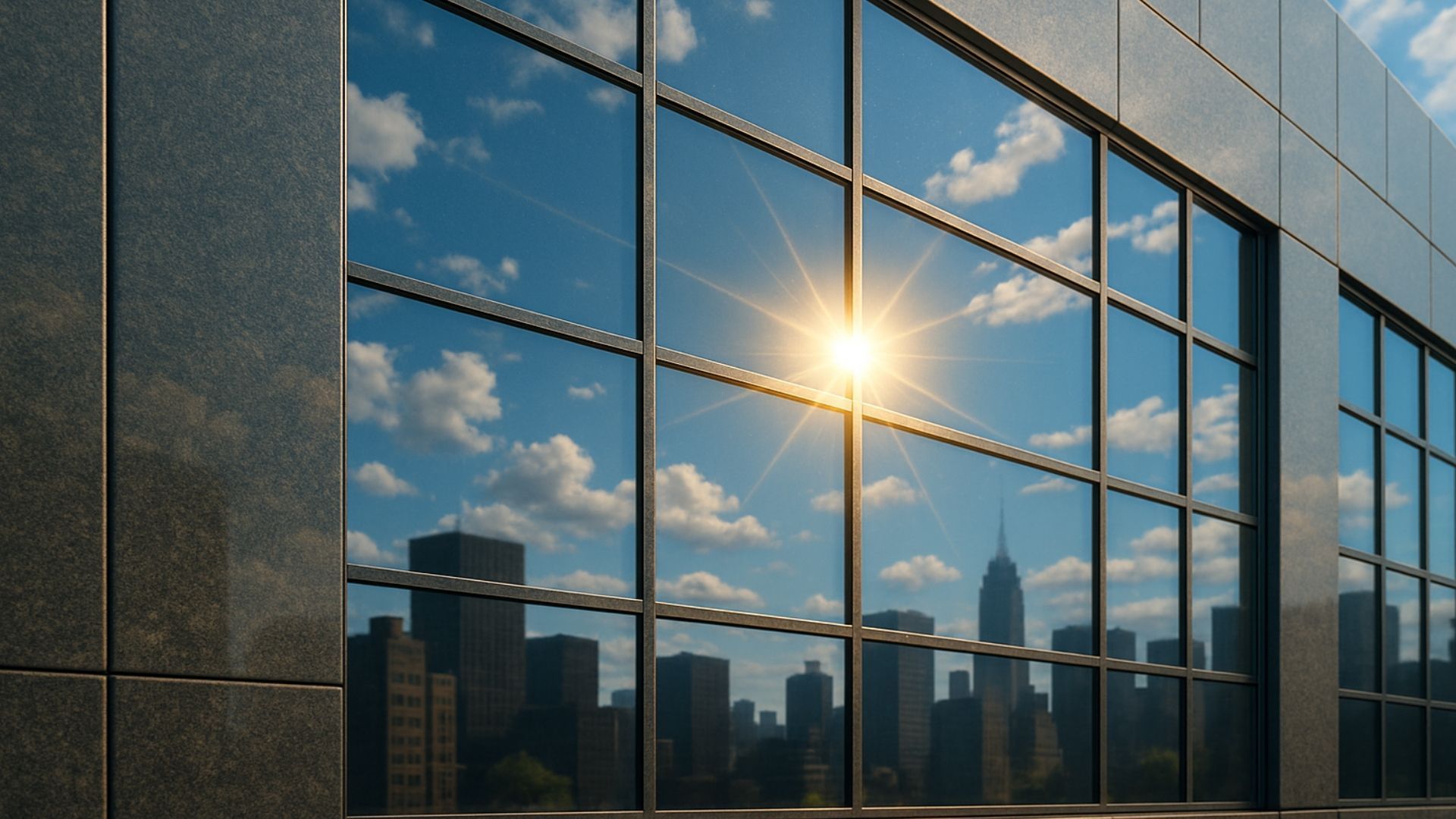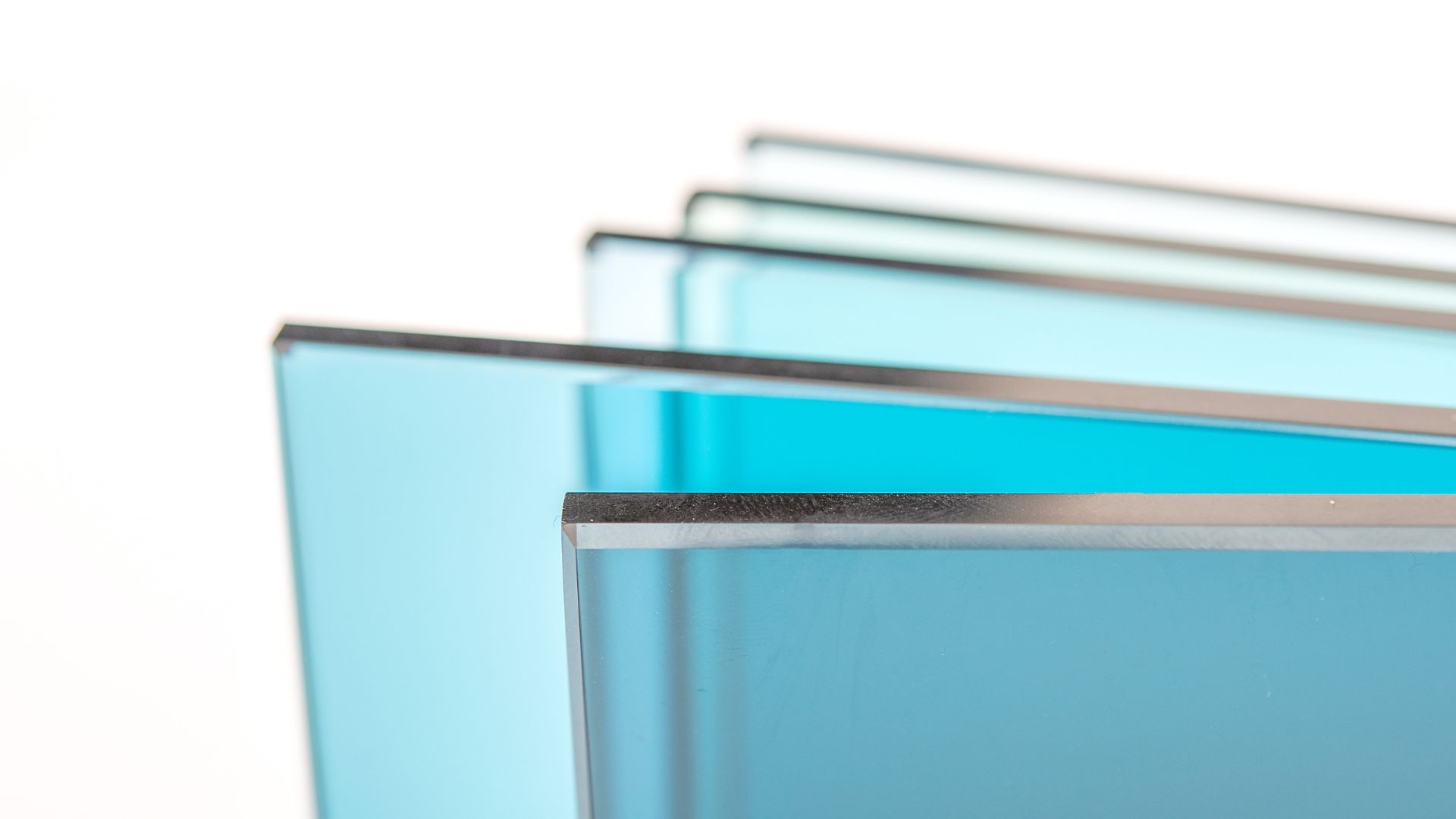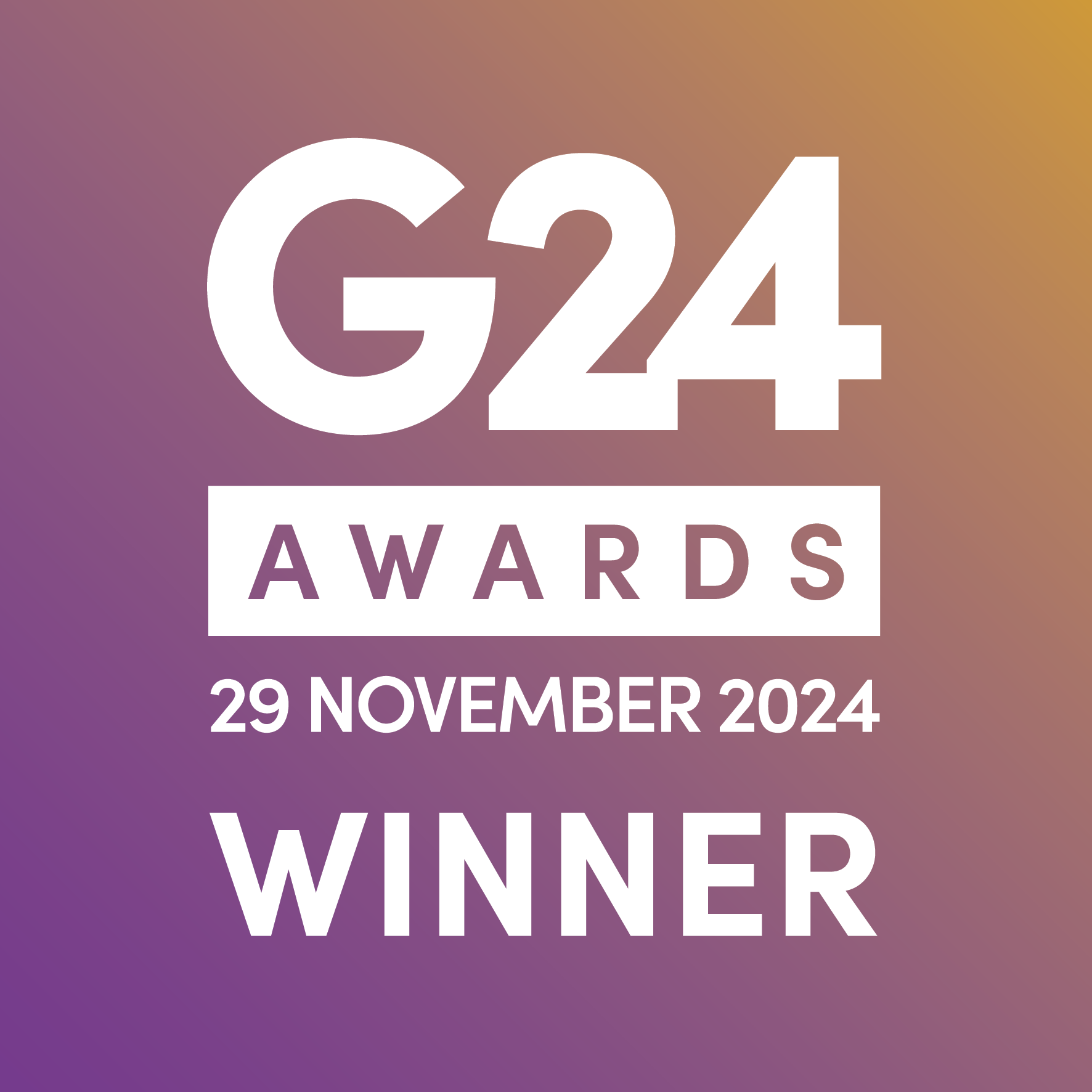How is coloured glass made?
Share this blog:
Coloured glass comes in many forms and is produced with many techniques. Explore this most vibrant of glass products in our guide.

Glass has always been about more than just functionality. Craftspeople in Ancient Egypt and Mesopotamia started making glass way back in the third millennium BC. Back then, this now-ubiquitous material was used to fashion decorative coloured beads and other objects.
Fast forward to the fourth and fifth centuries AD and the churches of Europe were adorned with coloured glass.
Today, coloured glass is everywhere. Walk through any city and you'll see shopfronts, skyscrapers and even elevators made from brilliant coloured glass.
So, how is it made? As so often in the world of glass, there's more than one answer.
There are many different ways to add colour to glass. However, the different methods fall into two main categories: adding colour to glass when it's molten and adding colour to glass when it's finished.
Here at ToughGlaze, our coloured glass is made from two sheets of glass with a coloured interlayer. It combines the structural advantages of laminated glass (durability, insulation, security and more) with the almost limitless aesthetic potential of stained glass.
Tinting with metal oxides
This is the most common method for colouring glass. The principle is simple: metal oxides are mixed into the molten glass. When it sets, the colour sets with it.
This is how stained glass has been made for centuries. Craftspeople would stir in metallic oxides and let the mixture set. It would then be blown into sheets, cut to size and the pieces joined together with lead strips and putty.
Remove the lead and putty and that's pretty much how it's done today. Glass processors use specific metal oxides to give glass a whole host of brilliant colours. That includes cobalt oxide for blue, manganese dioxide for purple and pink, cadmium sulphide for yellow glass, and so on.
Tinting with nanoparticles
This technique is similar to tinting with metal oxides. But instead of a metal oxide, a colloid is added. This is where tiny suspended particles known as "striking glasses" are added to the molten glass. Commonly used colloids include gold ruby and selenium ruby.
Milk glass
Milk glass is a kind of opaque or translucent glass. It's often produced in white – hence the name – but can also be manufactured in colours such as black, blue, pink and yellow.
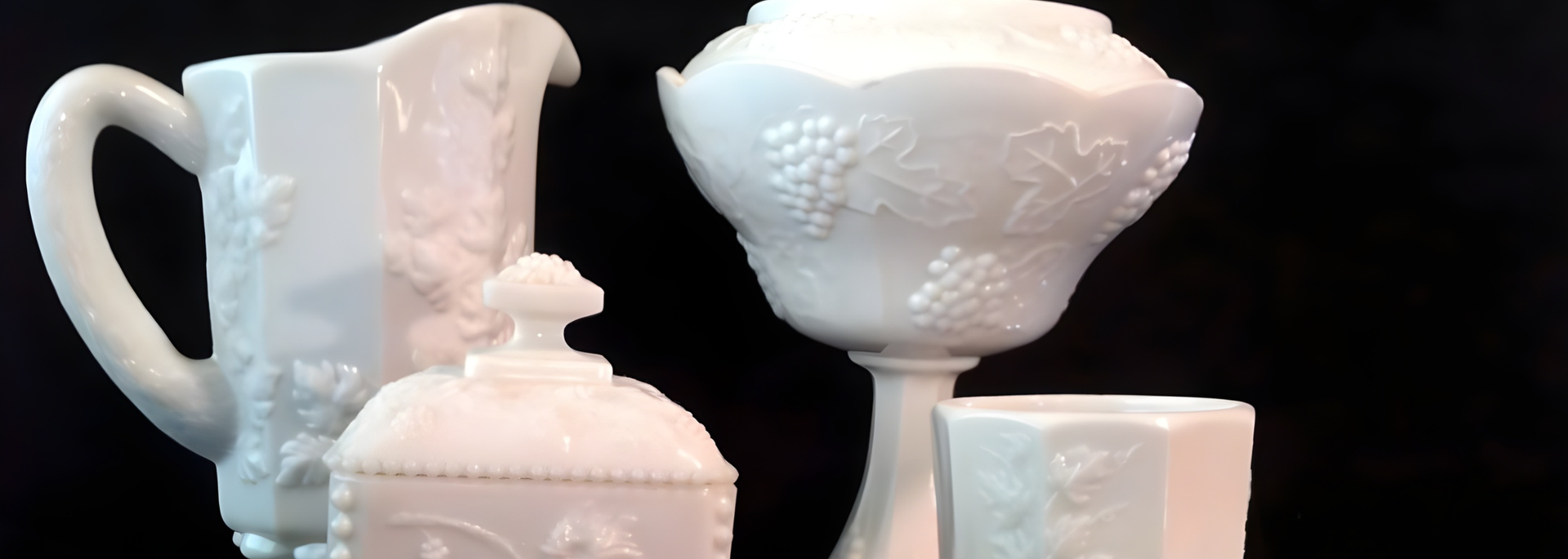
It was first made in 16th-century Venice – at that time, the glassmaking capital of the world. Back then, it was made by adding tin, zinc oxide or bone ash to the glass.
It was primarily used to make an affordable imitation of porcelain. Once manufactured, it was often painted with enamels.
Today, milk glass is mostly used to make vases, bowls, plates, jewellery and other items that are both decorative and functional.
Adding pre-coloured components
As well as adding oxides and nanoparticles to molten glass, pre-coloured components can be added to the glass once it's been manufactured. There are many different versions of this method. These range from historic techniques to modern-day advances.
- Enamelled glass: this is where powdered glass is added to the glass and then fired in the kiln. The result is a permanent coloured coating.
- Glass paint: this does what it says on the tin. Glass paint comes in a range of colours and is manufactured to resist chipping and fading.
- Silver staining: this technique has been around for centuries. It involves using a silver compound to create a yellow-to-orange stain. To this day, it's used in the manufacturing of stained glass and the restoration of old windows.
- Frit: this consists of small pieces of crushed glass. Fritting involves applying colour to different types of glass. The frit is applied to the surface of the glass and they're fired together in the kiln.
- Flashed glass: this is a type of glass with a thin layer of coloured glass fused onto a sheet of glass. It's sometimes used to make ruby-coloured glass. If the glass were fully thick, the glass would be too dark – but with flashed glass, the glass stays translucent.
All these methods have their advantages. But for applications where strength is required, many installers and designers turn to laminated glass fitted with coloured interlayers.
This gives buildings the durability of laminated glass with a pop of colour. In other words, it combines functionality and decoration like nothing else.
Many different kinds of interlayers are available on the market. Here at ToughGlaze, we use Vanceva interlayers. Here's why.
Vanceva interlayers
Some kinds of coloured glass come in a limited selection of colours. With Vanceva interlayers, however, you have a virtually unlimited selection.
This is because the Vanceva Colour Studio palette comes in 13 basic colours. Out of these, around 3,000 shades can be fashioned.
Each shade can be made translucent by adding an Arctic Snow or Cool White interlayer. These can also be used to create an elegant frosted surface – perfect for installations where a bit of extra privacy is called for. You can also go 100% opaque with the Polar White interlayer.
Yes, with Vanceva colour interlayers, versatility is the order of the day. Whatever effect you have in mind, our coloured glass panels can translate it into reality.
Our TG CI range uses extraordinarily resilient pigments that last for years – even when faced with direct sunlight. And because these coloured units are laminated and toughened, you can expect high levels of thermal efficiency, noise reducing properties – and above all, strength.
Our coloured glass panels can be cut to any size up to 2600 mm by 4300 mm and between 9.5 mm and 60 mm thick.
And like all our products, they're manufactured in accordance with the relevant industry standards. In the case of coloured glass, these include EN 12600 (resistance against impact) and EN 14449 (laminated glass).
Are you looking for high-quality coloured glass, cut to size? At ToughGlaze, we've supplied glass to architects and construction firms for more than 30 years. Get in touch today to discuss your specification and request a quick, competitive quote.

